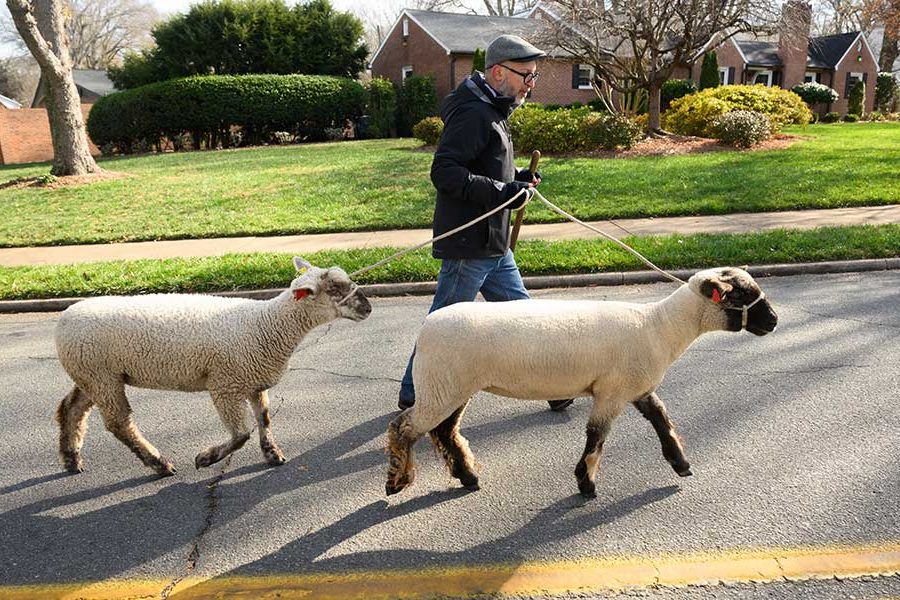Plants preserved in the Wake Forest herbarium hold clues to the past and the future
William Louis Poteat, seventh president of Wake Forest College from 1905-1927, is revered as a larger-than-life historical figure that championed the teaching of evolution and freedom of inquiry. But in an out-of-the-way lab in Winston Hall is evidence that Poteat, a biologist, was as interested in preserving the past as he was in charting the future.
In the Wake Forest herbarium — a library of dried plants — samples of algae that Poteat collected during walks on Martha ‘s Vineyard are mounted and stored for posterity. Their botanical names, along with comments and dates in Poteat ‘s handwriting, are just some of the gems discovered by curator Kathy Kron in what she calls the University’s “little treasure trove.”
Poteat ‘s sample of Ulva lactuca, water lettuce, dated 1883, is one of more than 13,000 specimens including grasses, algae, blooming plants, and an entire storage cabinet filled with pine cones from around the world. Through identification of characteristics including flowers, petals, roots and stems, student and faculty researchers are able to determine proper botanical names, where the plants may have originated, and if they may be on the garden path to extinction.
“We keep specimens from local areas and from around the world—the tropics, the Arctic, Europe, Africa and Asia,” said Kron, professor of biology. “It is a great resource for our students and a valuable historical collection.”
Botanical specimens dating as far back as the 1800s arrive at the Wake Forest herbarium from other universities and museums. They arrive wrapped in newsprint and are first stored in a sub-zero freezer to kill any insects that may have made the trip, too. Once freeze-dried, they are carefully mounted and pressed between pieces of acid-free paper, their stems, blossoms or berries attached with special glue or linen tape. The final stop is a fireproof-waterproof-insectproof steel storage cabinet.
Before returning any on-loan specimens, students identify the plant ‘s family and species and attach the correct information in a meticulous process called annotation. They may keep a sample, particularly of a rare plant, as a back-up in case of loss.
Kron, whose own research has included looking at some 5,000 specimens of blueberries from as far away as Australia, said the dried treasures in the herbarium are a record of what was collected at the time. When older samples are compared with contemporary specimens, the results shed light on the changing biology and ecology of an area.
“We have samples of rare plants, endangered plants, plants of the past and present,” she said. “The herbarium is a vast source of information. Many times students will see a plant here for the first time, even before they see it green.”



